10 Romanesque Art Treasures from Barcelona
Barcelona = Gaudí, we all know that. For football fans, it is also the famous Barça, the team with the motto: “More than a club”. And so it is...
Joanna Kaszubowska 7 November 2024
29 July 2024 min Read
This is the largest Gothic altarpiece in the world and a national treasure of Poland. Carved over a period of 12 years, the 15th century Veit Stoss Altarpiece (or St. Mary’s Altar) is located behind the high altar of St. Mary’s Basilica, Krakow. Read its outrageous story involving medieval celebrities, fraud, and the Nazis.
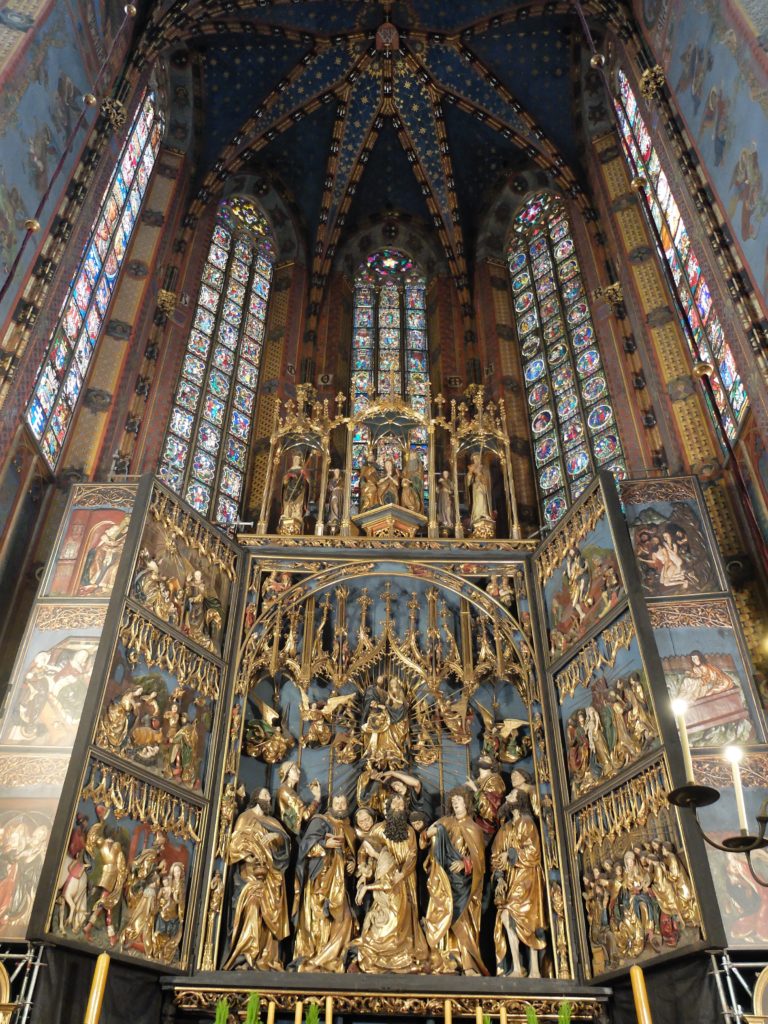
Standing at 13 meters high and 11 meters wide, St. Mary’s Altar contains over 200 realistically sculpted figures from the Christian story, treated with color and gold foil, some almost 3 meters in height.
The altarpiece is a pentaptych, i.e. having five pieces. We see a central section, a pair of opening internal wings, and a pair of fixed external wings.
As we move from the outer sections of the altarpiece towards the center, the sculptural forms go from flattened relief to three dimensions. The outer wings show bas-relief, the inner wings show high relief, and the central sculptures are almost fully rounded figures. In a similar sweeping movement, the life-like full color of the outer edges turns to gilding towards the center of the piece. In the allegorical interpretation of colors in the Middle Ages, this most valuable metal (gold) symbolized the eternal light of heaven and it is these rays that bathe the central scene.
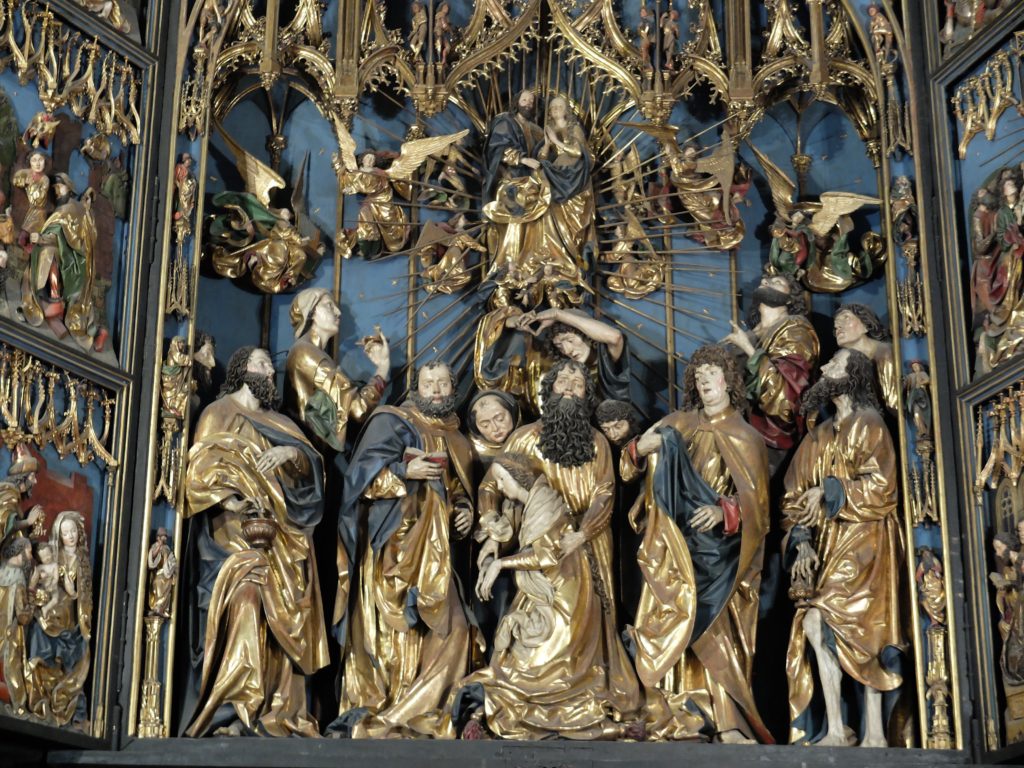
Veit Stoss’ individual style has sometimes been called late Gothic Baroque. We see pathos and dramatic emotion, assisted by his technical mastery and virtuoso carving of billowing drapery. The sculptural treatment of the faces reveals an outstanding ability to observe people. The piece as a whole has harmony and symmetry. Meanwhile, each individual figure is given the character of an expressive individual portrait, with energy and emotional depth.
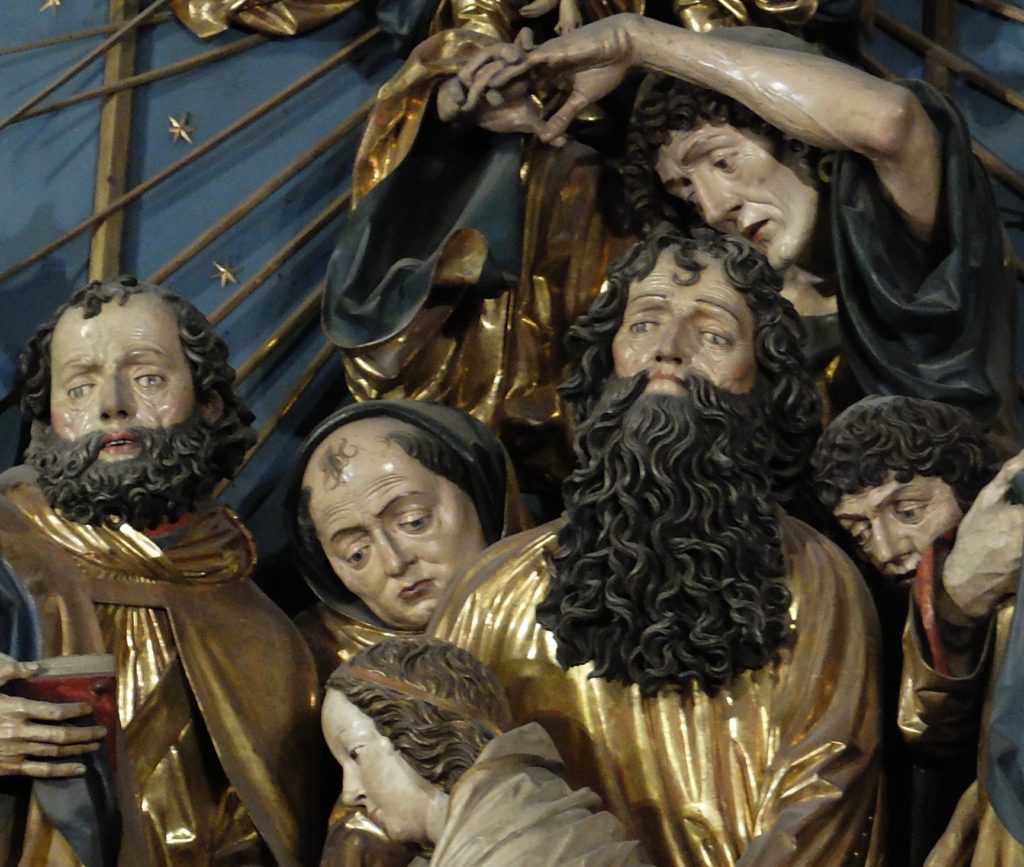
Production required a large workshop of craftspeople including skilled, specialized painters and gilders. The extensive use of gilding helps explain the cost. It is speculated that the altarpiece costs eventually ran to 2808 florins, roughly equivalent to the entire city budget for one year!
Veit Stoss (1448–1533) was a leading German sculptor working mostly in wood. His career covered the transition between the late Gothic and the Northern Renaissance periods. As a young man, he settled in Nuremberg, a bustling merchant city where Albrecht Dürer was his contemporary.
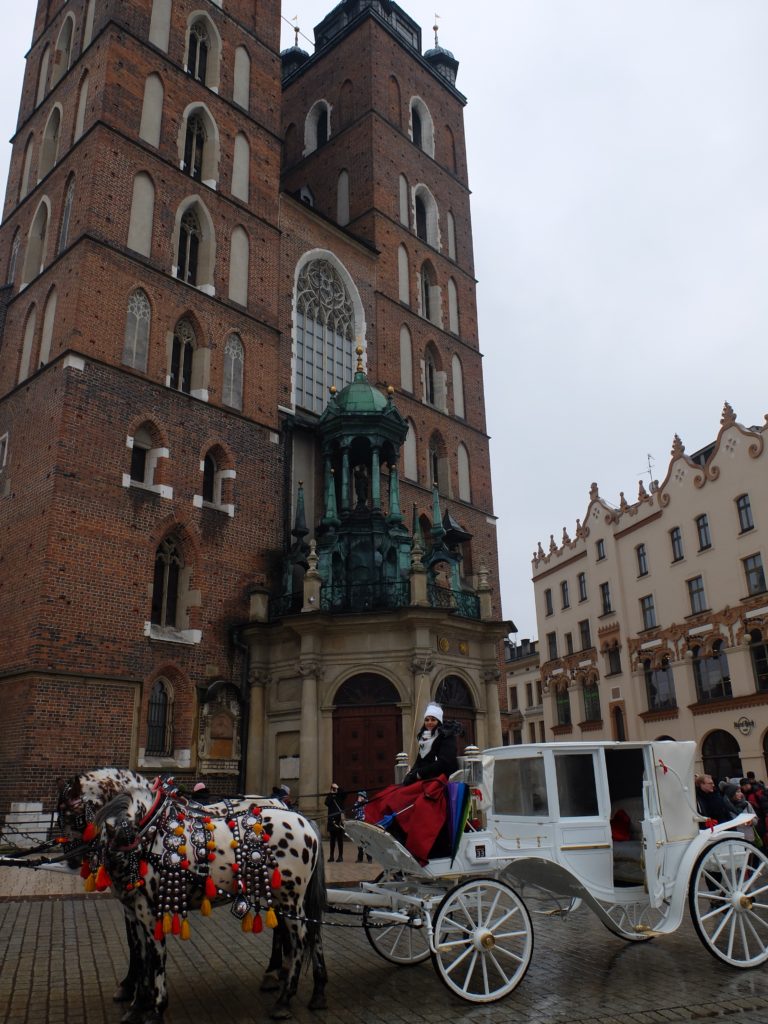
When Veit Stoss moved to Krakow, he found a grand and prosperous city. Diplomacy and economic stability had created an affluent and culturally vibrant country in a period that was later to be known as Poland’s Golden Age. Veit Stoss’ rise as an artist was meteoric and he became a free man of the city. The St. Mary’s altarpiece was his largest commission and he remained in demand right up until his sudden departure from Krakow in 1496.
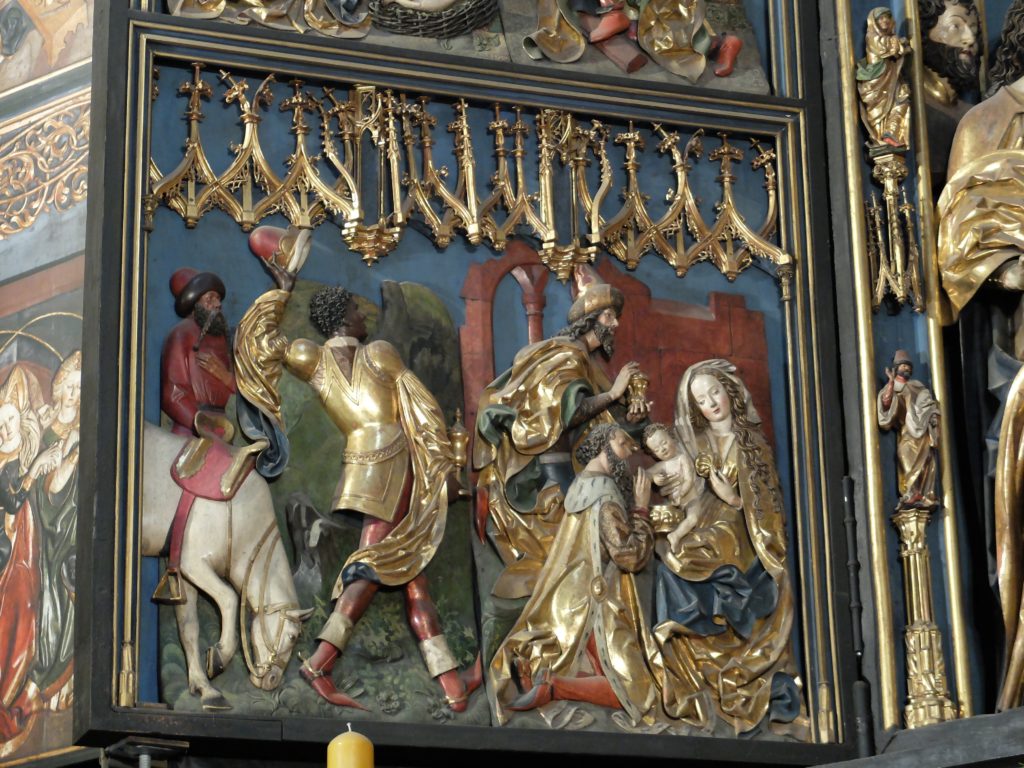
Veit Stoss’ departure from Krakow is intriguing. There are no records to show why he suddenly returned to Nuremberg with his wife and eight children. However, it was possibly because of investment fraud. In 1503, shortly after he re-acquired his Nuremberger citizenship, he was arrested for forging the seal and signature of a fraudulent contractor. He could have been blinded or put to death for this crime. Instead, he was sentenced to be branded with red-hot irons on both of his cheeks and prohibited from leaving Nuremberg city limits without the explicit permission of the city council. He did attempt escape but was found and imprisoned. Later, following interventions by high-placed figures, he was pardoned in 1506 by the art-loving Holy Roman Emperor Maximilian.
Veit Stoss never returned to Krakow but several of his children did, building careers as goldsmiths and sculptors. The kudos that went with the support of Emperor Maximilian seems to have put the sculptor’s career back on track. He lived out his days in Nuremberg, continuing to work well into his 80s. He died in 1533, his reputation undiminished as one of the greatest artists of his age.
The dramatic story of the altarpiece, however, does not end there. Several weeks before the outbreak of World War II, fearing damage or theft of artworks, city art historians took measures to secure the altarpiece. After 450 years in St. Mary’s Basilica, it was partially disassembled and hidden in crates within cellars in Krakow and Sandomierz.
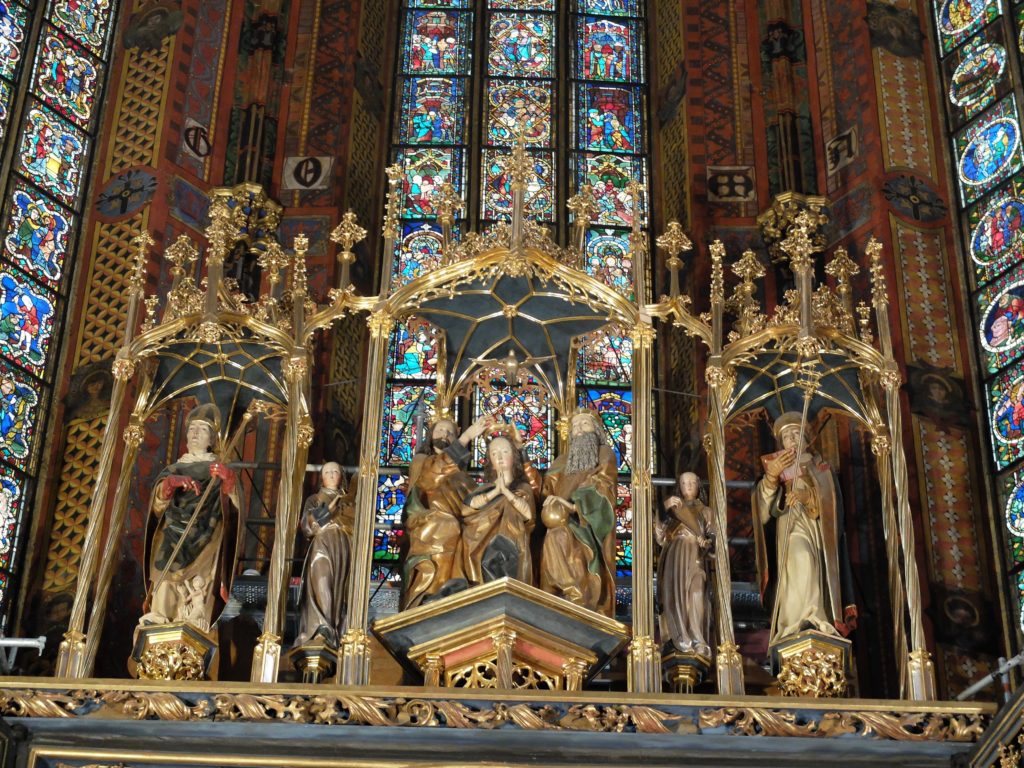
By 1940, the Nazis had learned the whereabouts of these crates and seized them, relocating them to Nuremberg castle. Remember that Veit Stoss was born a Nuremberger, thus he met the Nazi definition of “Aryan”. Hitler considered the altarpiece to be German property!
In a further twist, Polish prisoners held in the castle discovered the looted masterpiece and managed to get messages to the Polish resistance about the location of their revered altarpiece. It was retrieved after the war ended, miraculously unharmed despite the heavy bombing of the castle.
The altarpiece was returned to the people of Krakow in 1946 and underwent 10 years of major restoration work before being re-sited at St. Mary’s Basilica, in 1957. It continues to inspire awe in visitors there to this day.
DailyArt Magazine needs your support. Every contribution, however big or small, is very valuable for our future. Thanks to it, we will be able to sustain and grow the Magazine. Thank you for your help!